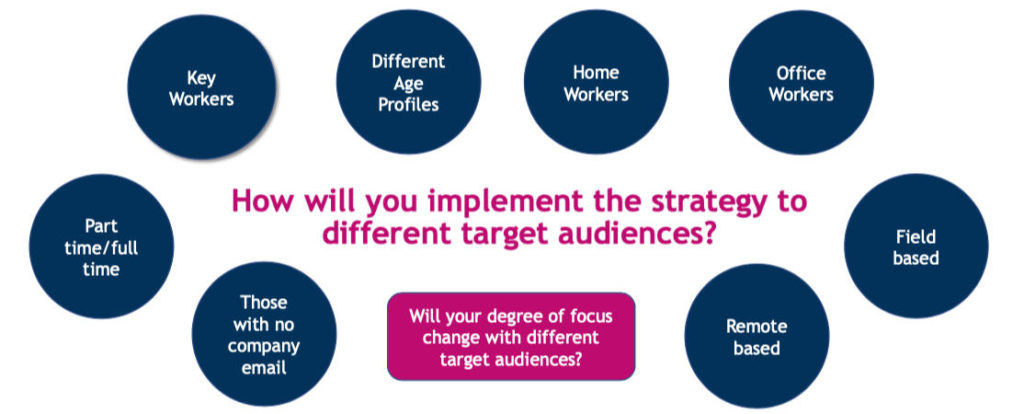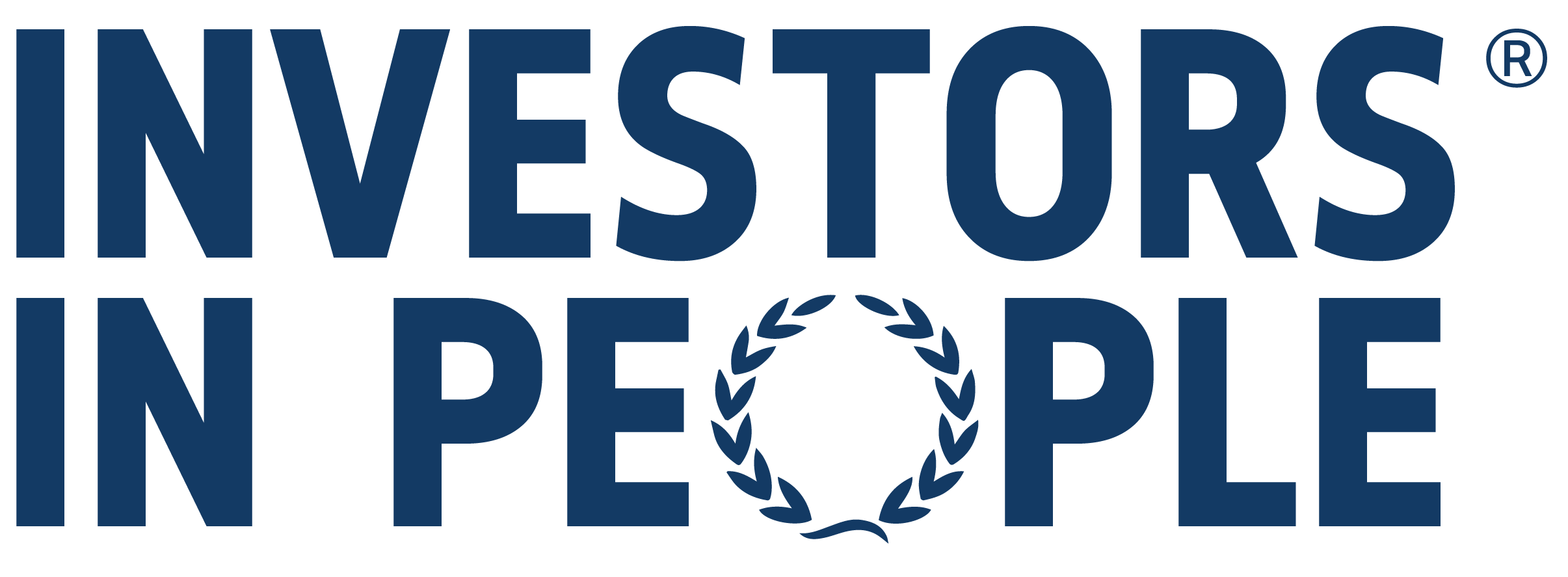One thing COVID-19 has done is throw employee wellbeing into the spotlight, with 41% of employees experiencing poor mental health where work was a contributing factor in 2020/21.
The pandemic has changed peoples’ expectations from their employers, with support for people’s wellbeing now an essential requirement.
So while health and wellbeing are higher on the corporate agenda, it isn’t always prioritised, which could be for several reasons, such as:
- You aren’t sure of the true value of promoting well-being in the workplace and its impact on employees and performance.
- You aren’t sure whether you can prove the worth of your employee health and wellbeing strategy as it can be challenging to measure and evaluate.
- You aren’t aware of the available initiatives and how you can use them.
We know that you can jump these hurdles and develop a wellbeing strategy that delivers results for you, your business and your people.
So if you haven’t developed a wellbeing strategy before or you’re struggling to create one that has an impact, keep reading!
We’ll split the process into two parts:
- Strategy: Data collection and goal setting
- Execution: Implementation, tools and engagement
1. Strategy: Data collection and goal setting
Taking your first steps
If you’ve never implemented a wellbeing strategy, you’ll want to start with small steps to get you going.
Firstly, you’ll want to get it on the agenda and start conversations with other senior leaders. Pay close attention to the reaction and determine who’s on board and who needs a little convincing.
Secondly, you need to think proactive, not reactive. While organisations can have wellbeing initiatives that work, they often don’t tie back to a long-term goal with measurable KPIs, so success is always tricky to judge. Think about what you want to achieve long-term.
Thirdly, you need to embrace your culture by understanding workplace wellbeing and what it means to you from a holistic, organisational perspective. Ask yourself some of the following questions to get a better understanding:
- What are your business objectives?
- What challenges are you facing in your organisation?
- What approaches to health and wellbeing have you taken so far?
- What is the current level of engagement in health and wellbeing activities?
- What is important to your people?
Collecting data
There are several ways you can extract data to help develop your wellbeing strategy:
- Staff surveys and focus groups
- Health and safety stats
- Employee assistance programme stats
- Stress audit
- HR data
- Aggregated health data
- Feedback from health champions
- Exit interviews
When you gather your data, consider whether it’s representative of your people, when it was produced, and how relevant and reliable the data is. You’ll also want to consider geographical, cultural, demographical and operational insights.
Goal setting in the three key areas of wellbeing
Getting your vision right will ensure your strategy is well-defined and, therefore, more likely to succeed. There are three areas of wellbeing we advise you to consider when defining what wellbeing means to your organisation:

1. Physical wellbeing
Physical wellbeing relates to creating a company culture where everyone is encouraged to prioritise their physical health and develop a healthy lifestyle to live in a balanced state of body and mind.
2. Psychological wellbeing
Psychological wellbeing relates to creating a company culture where employees can develop resilience and manage stress, feel like they have meaning and purpose, and be happy at work.
3. Social wellbeing
Social wellbeing relates to creating a culture where everyone feels a sense of belonging. People feel valued as colleagues and employees and live your company values. But most crucially, they feel valued as a person – and that’s a powerful feeling to give.
What do these areas of wellbeing mean to your people? Engage people at all levels of your organisation to find out.
One of the main reasons wellbeing programmes fail is that they don’t represent the people who work for the company. Engage your employees at the earliest stage possible.
Using data to set strategy goals
All successful strategies start with well-defined goals no matter what industry or profession you work in. Use your data to shape your goals, whether it’s quantitative or qualitative. It’ll help give your strategy depth and meaning.
A lack of data is also one of the main reasons employee wellbeing programmes fail. If you don’t base your initiatives on evidence, it’s all down to personal opinion.
For example, the Workplace Wellbeing Index 2016 report found that 73% of employers offer a cycle to work scheme, even though employees didn’t rate it in the top ten.
In contrast, only 23% of companies offered cancer screening to employees despite being rated as a top-five benefit for effectiveness.
Here’s a hypothetical goal that’s based on evidence:
This year, we had a 54% retention rate, and 82% of exiting employees stated poor work-life balance in their exit interviews. We intend to reduce our retention rate by improving our work-life balance in 12 months.
Defining goals for progress tracking
Before you implement your strategy, you need to consider what KPIs you’re going to measure so you know whether your strategy is a success. Here are some common KPIs:
- Increase employee engagement/motivation
- Reduce absenteeism
- Employee retention
- Work environment satisfaction
- Management style satisfaction
- Improve productivity
- Enhance employment brand
- Support talent management
- Reduce medical plan costs
- Adhere/comply with legislation and HR requirements
We wouldn’t advise picking one from this list, though. Do some digging into your data and allow that to guide you.
Presenting the case for your employee wellbeing strategy
If your strategy gets off the ground, you need buy-in from senior leaders and board members in particular.
To get the buy-in, you need to be clear on your goals and KPIs, how you’ll measure success, what costs and resources you need, and how you’ll tie them to the business plan.
If your planning and goal setting is done well, you should have a compelling, persuasive argument for implementing your strategy.
Internal or external?
Before you pitch to the board or your manager, think about whether you want to plan, deliver and measure the strategy yourself or get external support.
The most significant advantage of doing it in-house is that you’ll save money. The most crucial disadvantage is that you won’t have the experience and knowledge of someone who’s done it before.
You’ll have access to that knowledge and experience if you outsource, but you need to balance out the cost and ensure you’re getting a reputable person or company.
2. Execution: Implementation, tools and engagement
You can set goals and dream big, but if you don’t have a plan to deliver your wellbeing strategy, you’re going to struggle.
What to consider before you implement your health and wellbeing strategy: Key questions
- How will you communicate the programme?
- What are the resource and time needed?
- How does it link with your diversion and inclusion strategy (if you have one)
- Are you offering training virtually or in person?
- What training will you need for different levels of the business?
- What’s your budget?
- How does the strategy link to your organisational ambition?
- Who are your stakeholders?
- How can you make use of technology?
- How do you ensure it’s holistic in approach?
Implementing the strategy to different audiences
Much like your customer base, your employees are different people with individual needs, which you need to consider when developing a wellbeing strategy. Here are some examples (not exhaustive) of the different types of people you may have in your organisation:

How will you implement your strategy at different levels?
It would help if you delivered your plan at different levels so that people can care for their wellbeing collectively, individually and on a one-to-one basis.
One-to-one
How will you deliver your strategy to the individual? Do you have people that are Mental Health First Aiders? A functional HR department? Employee Assistance Programmes?
Teams
Are your managers and senior people trained to help people with their health and wellbeing? If not, how will you develop a team of people trained in areas like diversity, resilience and mindfulness?
Self
Are your policies and procedures empowering your people? Do they allow people to care for their wellbeing? Do you have tools, network groups or apps that enable people to practise self-care?
Communication is critical
If you can’t communicate your strategy, you’ll struggle to deliver it, and it won’t connect with your people. Here’s what to consider when you’re thinking about communicating your strategy:
- Stakeholders – who needs to know about your strategy?
- Value proposition – what are you promising your people?
- Cost structure – do you need a budget for comms?
- Team resource – do you need to allocate extra resources to your marketing team?
- Employee segments – do you need to send different messages to different people?
- Channels – what channels will you use? Are people in different places?
- Activities/tools – what activities/tools are you promoting?
Use tools to engage your employees in the process
You need to identify a range of tools that you can use to deliver all aspects of wellbeing that work for your people.
What do employees want?
Your employees should always guide the use of any wellbeing tools in the workplace. And while generic data can’t be applied to your organisation, here’s what Perkbox found people want in their 2021 survey.
Use audience-driven wellbeing tools
You can also develop audience-focused tools, so you may find in your survey that people that are 16-24 require different tools to the 25-34 group.
For example, women that are going through menopause may require different tools. It’s important not to stereotype, though. Having employees that are all young women doesn’t mean they’re all interested in discounted hair and makeup vouchers.
Use your data to create different employee segments, engage your employees and use them to drive your tool development.
Create tools across the wellbeing spectrum
You’ll need to consider tools for the social, physical and psychological aspects of wellbeing:
- Physical – fitness classes, health measurement tools, health and nutrition advice.
- Psychological – resilience programmes, mental health resources, flexible working policies.
- Social – team days out, charity days, diversity and inclusion policies.
Use the employee experience to create wellbeing tools
You should consider all aspects of your employee experience and how you can use it at different points to gather helpful information about the tools you’re using. Feedback is crucial here.

How do you consider people’s wellbeing at each stage of this process, and what tools do you provide to ensure people maintain a healthy wellbeing level? For example, you may have a policy that states new employees do one less hour per day for their first week, so they don’t burn out.
Using technology
Technology is becoming more common in managing workplace wellbeing, especially with remote working being more common.
There are tools for performance management, digital wellbeing, burnout, communication, employee engagement and general health and wellbeing.
First, determine what is most important (which should be clear in your strategy), and use it as a directive for your technology.
Engaging and developing the whole organisation
When it comes to using tools, it’s important to get buy-in from everyone. Otherwise, you could be investing in something pointless.
This involves senior management using tools and promoting them throughout the organisation and staff at different levels taking the initiative and using them.
A culture of wellbeing requires everyone’s participation, and the tools you use will give you a clear picture of how engaged people are.
If you need to know your team better, you can use tools like MBTI, Strengthscope and Insights Discovery/Clarity 4D.
Understanding the fundamentals of employee engagement
When it comes to engaging your employees and understanding how well they’re engaging with the programme. Here are some indicators that your strategy is engaging:
- People understand the wider wellbeing strategy
- Senior leaders understand the impact of workplace wellbeing and champion it
- Managers are trained in wellbeing and performance
- Easy access to external providers/apps/portals/activities
- You analyse data around absenteeism, leavers, etc
- Work-related stress & causes of poor health are monitored
- You have a tailored range of practices and activities to suit everyone
Identifying barriers to employee engagement
Implementing a wellbeing strategy isn’t always smooth sailing, and barriers can often prevent success or completely derail the plan. If you can identify those barriers, you’re more likely to overcome them. There are a few potential barriers to engagement that will be different for each organisation, but here are a few common barriers:
- Senior leadership are not bought into wellbeing
- Fear that colleagues/managers will perceive it as work avoidance
- Lack of awareness of wellbeing events
Boosting wellbeing engagement
If you’ve identified barriers to engagement, you’ll want to take action to generate more interest in your wellbeing programme. The most straightforward way to understand how your employees feel about your strategy? Ask! Conduct interviews, surveys and focus groups with your people to discover why they aren’t engaging.
When you have the information, you need to consider how you market and communicate your initiatives and how managers and leaders act in accordance with the strategy. For example, can you incentivise attending sessions? Are you getting the message out through the correct channels?
Measuring the impact of your employee wellbeing strategy
Data will define how you start your project, measure it while delivering it, provide you with the information you need for analysis, and help you develop further strategies. You’ll need a mixture of qualitative and quantitative data to give your strategy depth and meaning. You’ll also need to use your KPI data to determine whether you’ve achieved your goals.
Using The Logic Model
You can use The Logic Model to judge the impact of your wellbeing strategy:

- Inputs – what resources did you have to dedicate to your project and was it more or less than what you expected?
- Activities – what did you do with the inputs to achieve your goal and did it work?
- Outputs – what was the volume of work you managed to produce and are you happy with the amount?
- Outcomes – how did the strategy benefit your organisation and its people?
- Impact – what is the long-term impact of your strategy?







